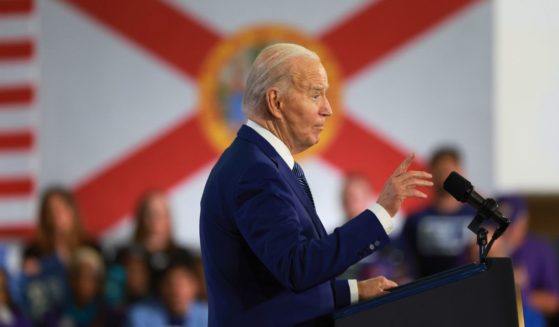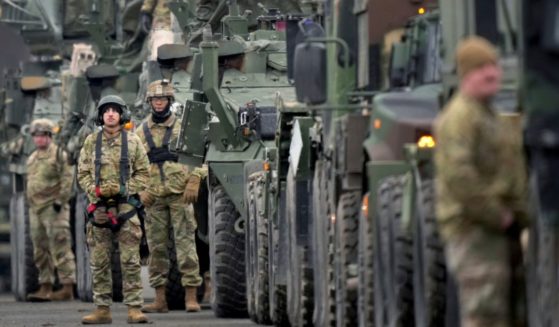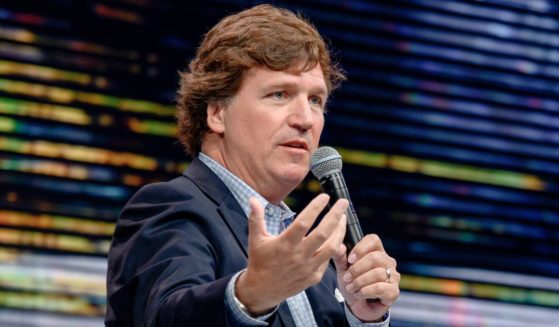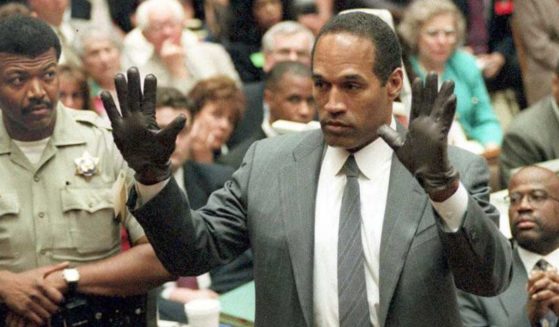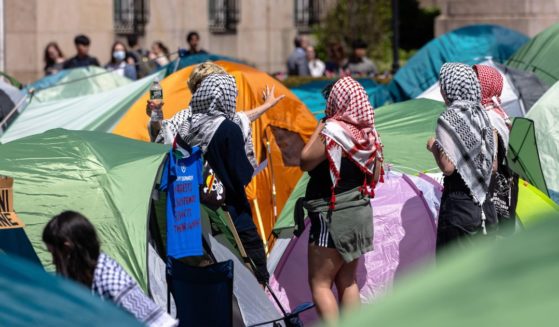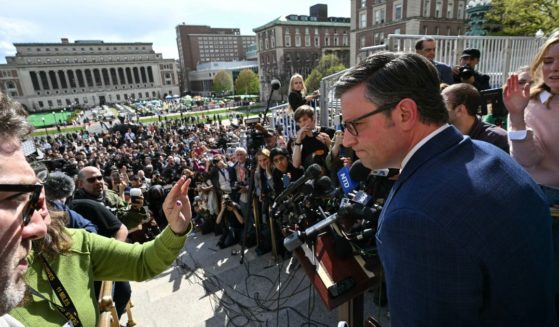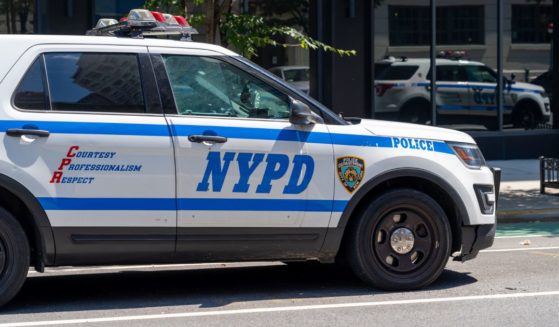AP Explains: Long reach of Iran's Revolutionary Guard
DUBAI, United Arab Emirates (AP) — Iran’s Revolutionary Guard, designated a “foreign terrorist organization” by the Trump administration on Monday, evolved from a paramilitary, domestic security force with origins in the 1979 Islamic Revolution to a transnational force that has come to the aid of Tehran’s allies in the Mideast, from Syria and Lebanon to Iraq.
The force answers only to Iran’s supreme leader, operates independently of the regular military and has vast economic interests across the country.
Here are key things to know about the Iranian Revolutionary Guard Corps, or IRGC:
ORIGINS:
The Revolutionary Guard was created in parallel to the country’s existing armed forces to consolidate power under Ayatollah Ruhollah Khomeini in the 1979 Islamic Revolution.
The following year, it was called upon to defend Iran and its clerical leadership in a ruinous war with Iraq that would last eight years and strengthen the guard’s ideological, economic and security footprint at home.
The group is estimated to have between 125,000 and 150,000 members today, but it’s unclear how many of those include the Quds Force, an elite wing of the IRGC that oversees foreign operations. The group, enshrined in the constitution, answers only to Iran’s supreme leader.
___
DOMESTIC GRIP:
The IRGC oversees the country’s ballistic missile program and has conducted several tests since the landmark 2015 nuclear deal between Tehran and world powers. While the accord does not specifically ban those tests, U.S. officials have said they violate the spirit of the deal. President Donald Trump last year pulled America out of the deal and re-imposed tough economic sanctions on Iran.
Additionally, the guard runs a massive construction company called Khatam al-Anbia, with 135,000 employees handling civil development, the oil industry and defense issues. Firms operated by the IRGC also build roads, man ports, run telecommunication networks and even offer laser eye surgery. The IRGC has deployed in rescue efforts during Iran’s recent devastating floods, which killed at least 70 people across the country.
Iran’s Supreme Leader Ayatollah Ali Khamenei last year ordered the guard to loosen its hold on the economy and privatize some of its vast economic holdings. Iran’s President Hassan Rouhani has tried unsuccessfully to further restrict the group’s expansive powers at home.
___
FOREIGN REACH:
The Revolutionary Guard recruits and trains thousands of fighters abroad through its Quds Force, headed by Gen. Qassem Soleimani, a shadowy but prominent figure whose fighters have fought alongside Syrian President Bashar Assad’s forces and against Islamic State militants who view Shiites as heretics.
U.S. officials say the IRGC under Soleimani taught Iraqi militants how to manufacture and use deadly roadside bombs against American troops after the 2003 invasion of Iraq, a charge Iran denies.
The group also oversees the Basij, a volunteer force of several million that draws its members from among the poor, uneducated young men from rural areas and city outskirts. The Basij model has been exported abroad, with tens of thousands of Shiites recruited from countries like Afghanistan, Pakistan, Lebanon and Iraq to fight in Tehran’s proxy wars in Syria and elsewhere.
One of those young Shiite men, who joined a wave of Afghans recruited and trained to fight in support of Assad’s government in Syria, recently spoke with The Associated Press about the experience, saying he was driven by poverty and not by ideology or loyalty to Iran.
___
MIDEAST MILITIAS:
The IRGC backs a number of Shiite militias across the Middle East, as well as the Fatimiyoun Brigade in Afghanistan. Chief among them is Hezbollah, the IRGC’s oldest and most experienced force in the region, established following Israel’s invasion of Lebanon in 1982. The militia, led by Hassan Nasrallah, publicly joined Syria’s civil war in mid-2013, securing a string of hard-won victories in defense of Syria’s Iranian-backed government.
IRGC-backed Iraqi militias also fought in Syria in support of Assad’s forces and against the Islamic State group in northern and central Iraq. Some of the armed groups in Iraq backed by Iran include the powerful Kataeb Hezbollah, Haraket Hezbollah al-Nujaba and Asaib Ahl al-Haq.
In Pakistan, the Zeinabiyoun Brigade is mostly comprised of Shiite fighters who have also fought in Syria. Many of the group’s fighters are trained and funded by IRGC.
Yemen’s Houthi rebels are also allied with Iran. Saudi Arabia, the United Arab Emirates, the United States and other countries have accused the guard of supplying the Houthis with long-range missiles, a charge it denies. A Saudi-led coalition, backed by the U.S. and Britain, has been at war with the Houthis since March 2015.
___
Mroue reported from Beirut.
The Western Journal has not reviewed this Associated Press story prior to publication. Therefore, it may contain editorial bias or may in some other way not meet our normal editorial standards. It is provided to our readers as a service from The Western Journal.
Truth and Accuracy
We are committed to truth and accuracy in all of our journalism. Read our editorial standards.

